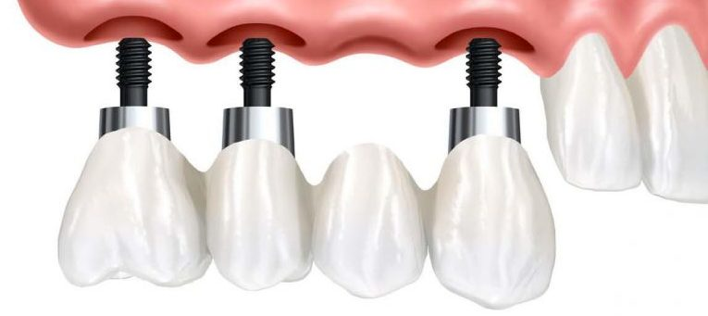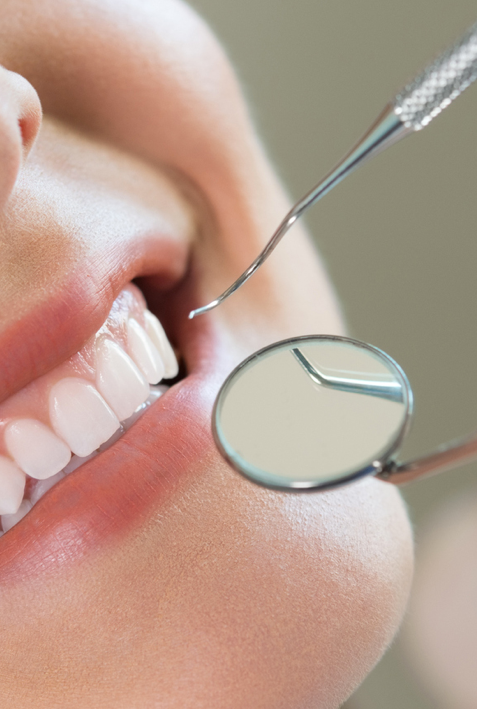
Veneers

Porcelain Veneers / Cosmetic Veneers
Porcelain veneers are thin pieces of porcelain used to recreate the natural look of teeth, while also providing strength and resilience comparable to natural tooth enamel. It is often the material of choice for those looking to make slight position alterations, or to change tooth shape, size, and/or color.
Our Dental Specialists will begin with a smile analysis to determine what steps are necessary to achieve the smile you desire. In addition, they may create a diagnostic mock-up that will allow you to “try on” veneers and other procedures to see if the final result is actually what you’re looking for.
They may also show you a photo of how your new smile will look. This is called cosmetic imaging.
Getting a dental veneer usually requires three trips to the dentist – one for a consultation and two to make and apply the veneers. One tooth or many teeth can simultaneously undergo the veneering process described below.

Details
Dental veneers can be made from porcelain or from resin composite materials. Porcelain veneers resist stains better than resin veneers and better mimic the light reflecting properties of natural teeth. Resin veneers are thinner and require removal of less of the tooth surface before placement. You will need to discuss the best choice of veneer material for you with one of our Cosmetic Dentists. They are used to recreate the natural look of teeth, while also providing strength and resilience comparable to natural tooth enamel. It is often the material of choice for those looking to make slight position alterations, or to change tooth shape, size, and/or color.
Veneers are routinely used to fix:
- Teeth that are discolored — either because of root canal treatment; stains from tetracycline or other drugs, excessive fluoride or other causes; or the presence of large resin fillings that have discolored the tooth
- Teeth that are worn down
- Teeth that are chipped or broken
- Teeth that are misaligned, uneven, or irregularly shaped (for example, have craters or bulges in them)
- Teeth with gaps between them (to close the space between these teeth)
Veneers

Porcelain Veneers / Cosmetic Veneers
Porcelain veneers are thin pieces of porcelain used to recreate the natural look of teeth, while also providing strength and resilience comparable to natural tooth enamel. It is often the material of choice for those looking to make slight position alterations, or to change tooth shape, size, and/or color.
Our Dental Specialists will begin with a smile analysis to determine what steps are necessary to achieve the smile you desire. In addition, they may create a diagnostic mock-up that will allow you to “try on” veneers and other procedures to see if the final result is actually what you’re looking for.
They may also show you a photo of how your new smile will look. This is called cosmetic imaging.
Getting a dental veneer usually requires three trips to the dentist – one for a consultation and two to make and apply the veneers. One tooth or many teeth can simultaneously undergo the veneering process described below.

Details
Dental veneers can be made from porcelain or from resin composite materials. Porcelain veneers resist stains better than resin veneers and better mimic the light reflecting properties of natural teeth. Resin veneers are thinner and require removal of less of the tooth surface before placement. You will need to discuss the best choice of veneer material for you with one of our Cosmetic Dentists. They are used to recreate the natural look of teeth, while also providing strength and resilience comparable to natural tooth enamel. It is often the material of choice for those looking to make slight position alterations, or to change tooth shape, size, and/or color.
Veneers are routinely used to fix:
- Teeth that are discolored — either because of root canal treatment; stains from tetracycline or other drugs, excessive fluoride or other causes; or the presence of large resin fillings that have discolored the tooth
- Teeth that are worn down
- Teeth that are chipped or broken
- Teeth that are misaligned, uneven, or irregularly shaped (for example, have craters or bulges in them)
- Teeth with gaps between them (to close the space between these teeth)






.png)

Remember to call your bank
for international charges



 +52 998 129 83 96
+52 998 129 83 96
















